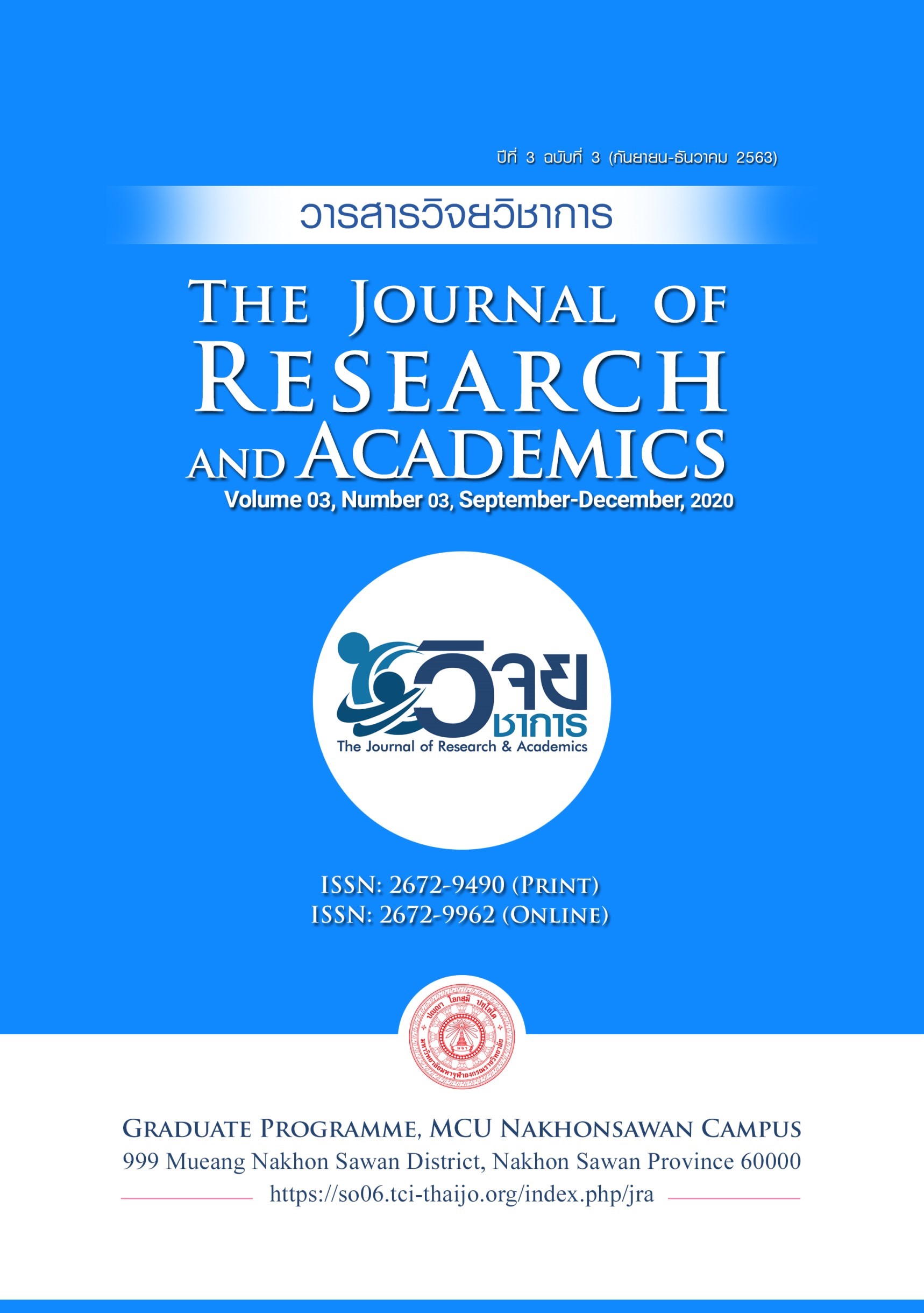The Treatment of Sangias Disease by folk wisdom, A case study of Ban Pa Mai community, Moo 1, Tha Ngio Subdistrict, Mueang District, Nakhon Si Thammarat Province
Main Article Content
Abstract
This article to study the methods of treating diseases from folk wisdom and promotion guidelines for the treatment of Sang diseases by folk wisdom. There were informants, folk doctors with 3 key, the sick and healed with 2 key, Patients undergoing treatment with 1 key, and community leaders who played a role in driving the succession of the treatment with 2 key. Data were collected using interview forms, observation without participation and Descriptive data analysis. Findings were as follow: (1) The methods of treating diseases from folk wisdom; With respect to the teacher of using flowers, joss sticks, candles and betel nuts. Assess the symptoms by talking, after that, prepare equipment and patients. Observe around the throat, sores or red patches, if there is fever; wipe the body to reduce fever. Use boiled, dried and burned drugs with a variety of herbal medicines. There are contraindications for treatment, such as refraining from using medication. Another one hour before and do not drink soft drinks because it will cause vomiting. (2) Promotion guidelines for the treatment of Sang diseases by folk wisdom: Promoting the use of local herbs in the treatment of Sang diseases, such as demonstrating and teaching to use herbs. Promoting treatment processes and procedures, such as asking basic symptoms and taking herbal medicines. Patient care after treatment and close monitoring. As well as creating acceptance and credibility in the treatment alongside exercise. Promoting the succession of treatment methods with knowledge and expertise, such as the treatment principles and properties of herbal medicines.
Article Details
1. เนื้อหาและข้อมูลในบทความที่ลงพิมพ์กับวารสารวิจยวิชาการ ถือเป็นข้อคิดเห็น และความรับผิดชอบของผู้เขียนบทความโดยตรงซึ่งกองบรรณาธิการวารสารไม่จำเป็นต้องเห็นด้วย หรือร่วมรับผิดชอบใด ๆ
2. บทความ ข้อมูล เนื้อหา รูปภาพ ฯลฯ ที่ได้รับการตีพิมพ์ในวารสารวิจยวิชาการ ถือเป็นลิขสิทธิ์ของวารสารวิจยวิชาการ หากบุคคลหรือหน่วยงานใดต้องการนำทั้งหมดหรือส่วนหนึ่ง ส่วนใดไปเผยแพร่ต่อหรือเพื่อการกระทำการใด ๆ จะต้องได้รับอนุญาตเป็นลายลักษณ์อักษรจากวารสารวิจยวิชาการก่อนเท่านั้น
References
กรุณา จันทุม และกัลยารัตน์ กำลังเหลือ. (2559). การรักษาโรคด้วยสมุนไพรและตำรับยาโบราณของหมอพื้นบ้าน. วารสารการแพทย์และวิทยาศาสตร์สุขภาพ, 24(2), 48-57.
ธวัชชัย กมลธรรม.(2562). ไทยประสบปัญหาขาดแคลนสมุนไพร. เข้าถึงได้จาก https://www.hfocus.org/ content/2015/06/10169.
ผู้นำชุมชนคนที่ 1, (2563, 2 กุมภาพันธ์). การรักษาโรคซางโดยภูมิปัญญาพื้นบ้าน. (นางสาวพรชิตา จิตมัง, ผู้สัมภาษณ์)
ผู้นำชุมชนคนที่ 2, (2563, 2 กุมภาพันธ์). การรักษาโรคซางโดยภูมิปัญญาพื้นบ้าน. (นางสาวพรชิตา จิตมัง, ผู้สัมภาษณ์)
ผู้ป่วยที่รักษาแล้วหายจากโรคซางคนที่ 1. (2563, 2 กุมภาพันธ์). การรักษาโรคซางโดยภูมิปัญญา พื้นบ้าน. (นางสาวพรชิตา จิตมัง, ผู้สัมภาษณ์)
ผู้ป่วยที่รักษาแล้วหายจากโรคซางคนที่ 2, (2563, 2 กุมภาพันธ์). การรักษาโรคซางโดยภูมิปัญญา พื้นบ้าน. (นางสาวพรชิตา จิตมัง, ผู้สัมภาษณ์)
ผู้ป่วยที่อยู่ระหว่างการรักษาโรคซาง, (2563, 2 กุมภาพันธ์). การรักษาโรคซางโดยภูมิปัญญาพื้นบ้าน. (นางสาวพรชิตา จิตมัง, ผู้สัมภาษณ์)
สุพน ทิ่มอ่ำ. (2551). การปลูกพืชสมุนไพรสร้างอาชีพ. กรุงเทพฯ: สำนักพิมพ์ อักษรเจริญทัศน์ จำกัด.
สุภัทรชัย สีสะใบ, ประเสริฐ ธิลาว, พระมหากฤษฎา กิตฺติโสภโณและพระปลัดระพิน พุทฺธิสาโร. (2562). ถอดบทเรียนจากพื้นที่: การดูแลผู้สูงอายุตามแนวพุทธในจังหวัดสมุทรปราการ. วารสารวิจยวิชาการ, 2(1), 149-170.
หมอพื้นบ้านคนที่ 1. (2563, 2 กุมภาพันธ์). การรักษาโรคซางโดยภูมิปัญญาพื้นบ้าน. (นางสาวพรชิตา จิตมัง, ผู้สัมภาษณ์)
หมอพื้นบ้านคนที่ 2, (2563, 2 กุมภาพันธ์). การรักษาโรคซางโดยภูมิปัญญาพื้นบ้าน. (นางสาวพรชิตา จิตมัง, ผู้สัมภาษณ์)
หมอพื้นบ้านคนที่ 3, (2563, 2 กุมภาพันธ์). การรักษาโรคซางโดยภูมิปัญญาพื้นบ้าน. (นางสาวพรชิตา จิตมัง, ผู้สัมภาษณ์)


